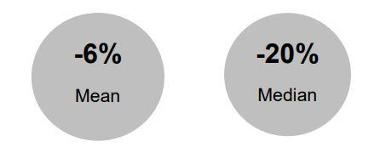Welcome to our new website!
We would like to receive any feedback on your experience, please email news@spelthorne.gov.uk.
Equality is fundamental to building a fair society and a strong economy as we need to make sure that we benefit from the talents of everyone. Within Spelthorne we strive to deliver equality of opportunity and aim to ensure that our workforce is diverse and inclusive.
Equality is fundamental to building a fair society and a strong economy as we need to make sure that we benefit from the talents of everyone. Within Spelthorne we strive to deliver equality of opportunity and aim to ensure that our workforce is diverse and inclusive.
Government regulations require us to publish an annual gender pay gap report so that we can measure the difference in average earnings between women and men. This enables us to identify any pay gap differences and develop initiatives to improve any gender imbalance that we find.
The gender pay gap is defined as the difference between the mean and median hourly rate of pay that our male and female employees receive.

These figures provided are based on hourly rates of pay at 31 March 2017 and show that:
The main reason for this gender pay gap is an imbalance of male and female colleagues across the services as we have a much higher proportion of men working in Neighbourhood Services, which includes refuse collection and street cleansing. Many of the roles within this area fall within the lower pay bands.
Mean -39.9%
Median -6%
The term "Bonus" in the government guidance considers long service awards, recruitment and retention payments for hard to fill posts and additional payments such as honorariums to be "bonus" payments. The bonus gap may be impacted by a higher proportion of women employed in hard to fill posts. These payments will vary from year to year and are dependent on organisational need.
Our Gender Pay Gap by quartile
| Quartile | Male | Female |
|---|---|---|
| Lower | 64.4% | 35.6% |
| Lower middle | 40.9% | 59.1% |
| Upper middle | 28.4% | 71.6% |
| Upper | 44.3% | 55.7% |
This chart shows the gender split when we order hourly rate of pay from lowest to highest and then group these into four equal quartiles.
Spelthorne does not reflect the pattern from the UK economy as a whole as generally men are more likely to be in senior roles.
The vast majority of organizations' have a gender pay gap and we are pleased to be able to say that we compare favourably to others. The gender pay gap nationally is now 9.1% according to the October 2017 Office for national Statistics (ONS) Annual Survey of Hours and Earnings (ASHE) figures. The figure is 13.1% for public sector employees generally and further comparison with Local Government specifically will be available next year.
Flexible working Where possible, we offer our employees a wide range of flexible working options to enable them to effectively manage their work/life balance. These options include part-time working, term time working, job share, agile working and a generous flexitime scheme. Development We are committed to identifying from within our current workforce those employees who have the potential to grow into more senior roles. We offer a wide range of learning and development opportunities for all employees including apprenticeships, management development programme and a wide range of courses for professional development.